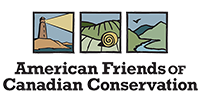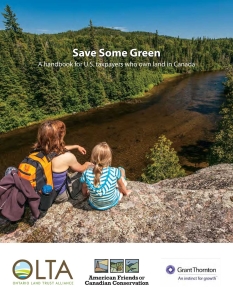The Nature Trust of New Brunswick shares how together, we can secure these vital habitats as vital refuges for wildlife and as sources of resilience for our communities.
Sheila Harrington is an author, sailor, environmental advocate, and friend to American Friends of Canadian Conservation (AFCC). In her recent book Voices for the Islands, Sheila chronicles the creation of local nature conservancies, and the people behind them, on 17 islands on the Salish Sea from the 1990s to the present day. AFCC had the pleasure of being involved in some of these conservation projects.
S24_InfoSheet_Voices-for-the-Islands
In October 2024, the IRS passed new regulations with respect to land and easement donations made by pass-through entities such as limited liability corporations and certain partnerships and trusts. These regulations affect some donors and land trusts who have been party to transactions leading to US federal tax deductions taken in 2018 and beyond. If you are a US taxpayer or land trust that has been involved in the donation of a conservation easement or fee land in which a US federal income tax deduction was taken in 2018 or later, other than donations to American Friends of Canadian Conservation, we encourage you to seek legal advice as to whether these new regulations affect you. The Land Trust Alliance has published guidance for land trusts here.
LaHave Coastal Conservation Association focuses its work in the LaHave Archipelago, located on the beautiful and biodiverse South Shore of Nova Scotia, in the traditional territory of the Mi’kmaq Nation. LaHave Coastal is happy to announce that it acquired East Spectacle Island on May 3, 2024 for conservation and restoration. This unique 19-hectare island is relatively far from human disturbances, which makes it an ideal reservoir for biodiversity. Its diverse habitats include wetlands such as a salt marsh and a fen, which provide insect habitats and food webs that are essential for birds.The southeastern banks of East Spectacle Island are candidates for hosting Bank Swallows, also known as Sand Martins (Riparia riparia), a threatened shore bird. The island’s biological significance reaches beyond its rocky shores to the near-shore waters rich in marine life.
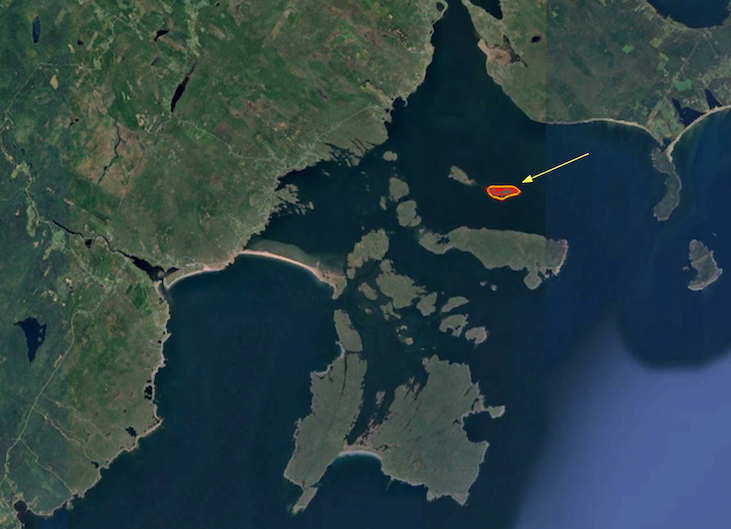
East Spectacle Island is in the mouth of the LaHave River between Gaff Point and Dublin Shore.
Land uses over the last century have included farming, forest harvesting and even a hotel, leaving the ecosystems of the island impacted. 50 years ago the island’s several parcels were recombined under a single owner, and the land was allowed to rest. LaHave Coastal’s acquisition of the island will enable monitoring and active restoration of the island, including tree planting.
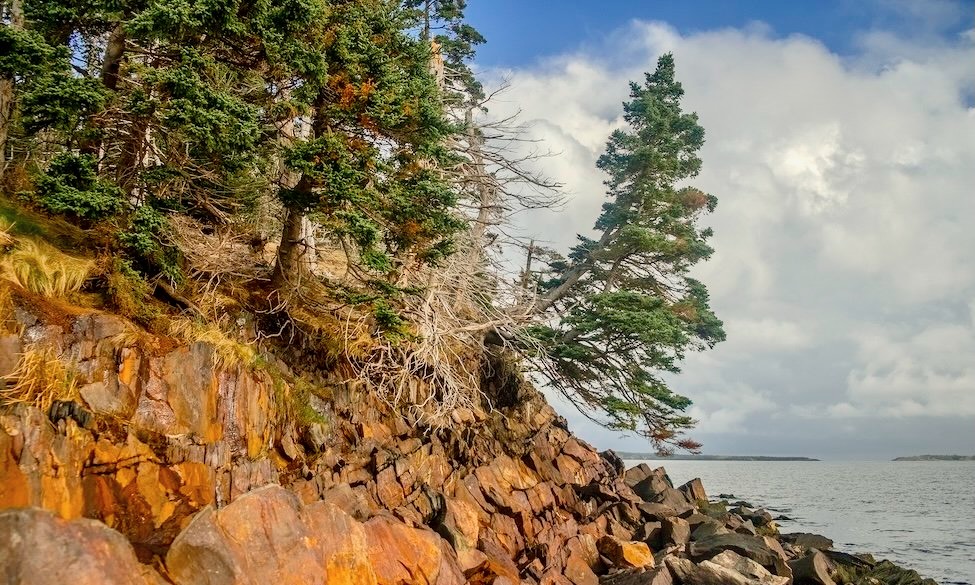
The island’s biological significance reaches beyond its rocky shores to the near-shore waters rich in marine life.
LaHave Coastal is grateful to the Crown Share Land Legacy Trust and many donors for supporting LaHave Coastal’s work to secure and restore East Spectacle Island.
Residents of Salt Spring Island, the largest of BC’s Gulf Islands and located in the traditional territory of the Coast Salish Peoples, have worked with the BC Parks Foundation to successfully save part of a rare ecosystem from development and logging.
In under a month, the Salt Spring Island Conservation Project crowdfunding campaign raised $1.2 million to preserve 31.2 acres of mature Coastal Douglas fir habitat on the south end of the Island. Coastal Douglas fir ecosystems are among the most biodiverse in BC, and they need the most protection—98% of their ecological communities are at risk of being lost.
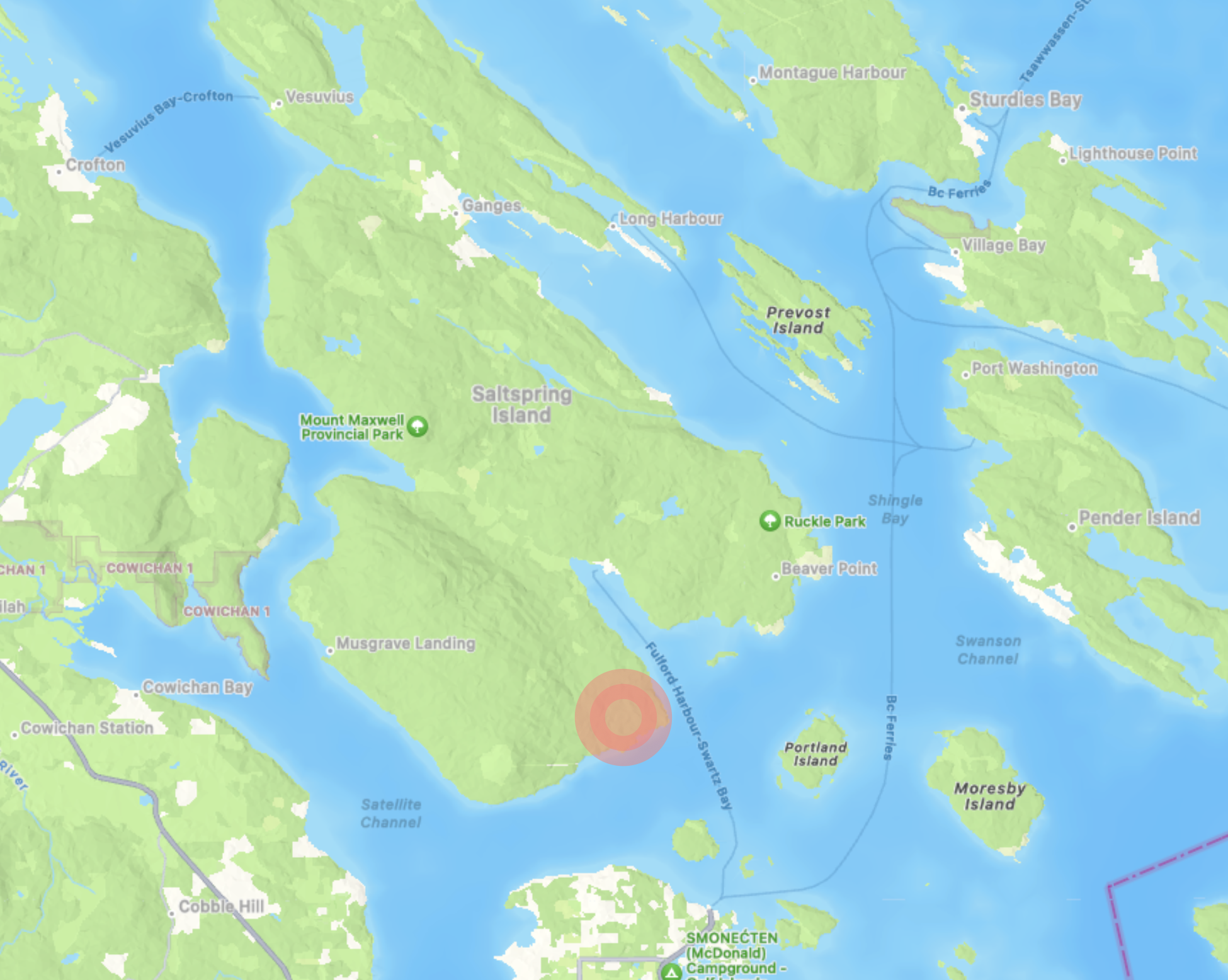
“Today is a big win for this vital ecosystem and for everyone involved,” says Andy Day, CEO of BC Parks Foundation. “It’s a shining example of how people can make a lasting positive impact by coming together.”
Local residents Elissa Poole and Charles Kahn recognized the value of the land and feared that, if it went on the market, it would be developed or logged for its mature timber. They reached out to BC Parks Foundation, who approached the owner and negotiated a purchase. Kahn, Poole, and the Foundation then worked together to launch a crowdfunding campaign and generate support.
“The heroes are our local partners and everyone who stepped forward and did what they could,” says Day. “The speed and dedication of the Salt Spring Island residents as they worked to protect this valuable land was nothing short of amazing.” Contributions included a $100,000 grant from Salt Spring Island Foundation’s Land Protection Fund and a significant gift from Wilson 5 Foundation, along with several other generous local donors.
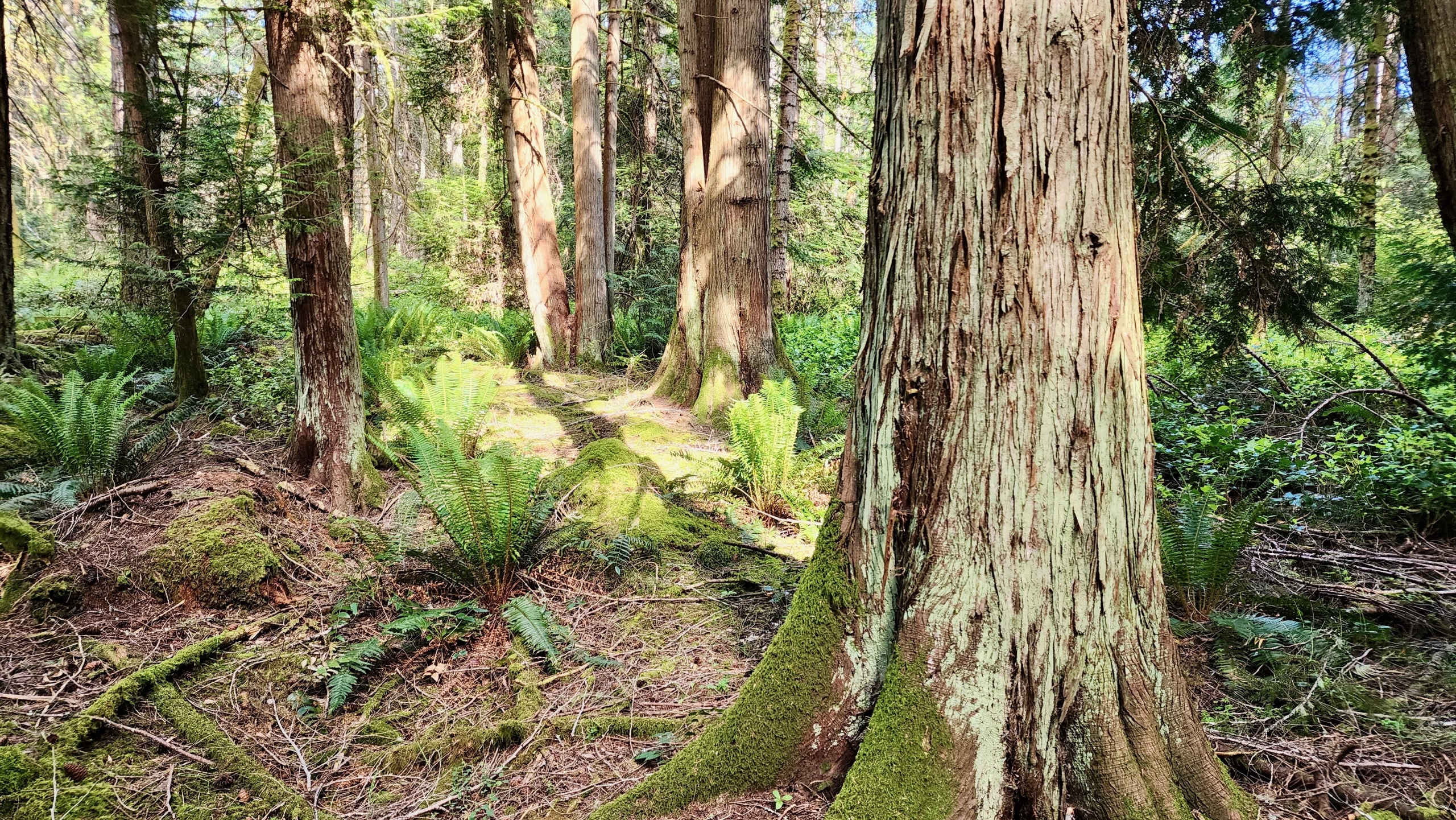
“From the start of this project,” says Poole, “many biologists and conservationists have walked through these 31 acres, marvelling at the variety of different ecosystems, the size of the old firs and cedars, the wealth of wildlife, and the amount of water in the wetland, even in drought. Their enthusiasm was tremendously helpful in validating this campaign, and the Salt Spring community has been wonderfully supportive, whether maintaining pledges made years earlier, or jumping in with significant donations as soon as they’ve learned about the project.
“Due to development and industry, BC’s coastal bird species have plummeted by 35% since 1970. The mature forests and older trees on this now-protected property are home to more than 100 bird species, including several species of conservation concern such as the olive-sided flycatcher, common nighthawk, and great horned owl. The wetland provides a haven for at-risk northern red-legged frogs, while yellow montane violets, also at risk, grace parts of the perimeter of the forested areas. “I couldn’t be happier, knowing that this special forest and wetland will at last be protected,” says Poole.
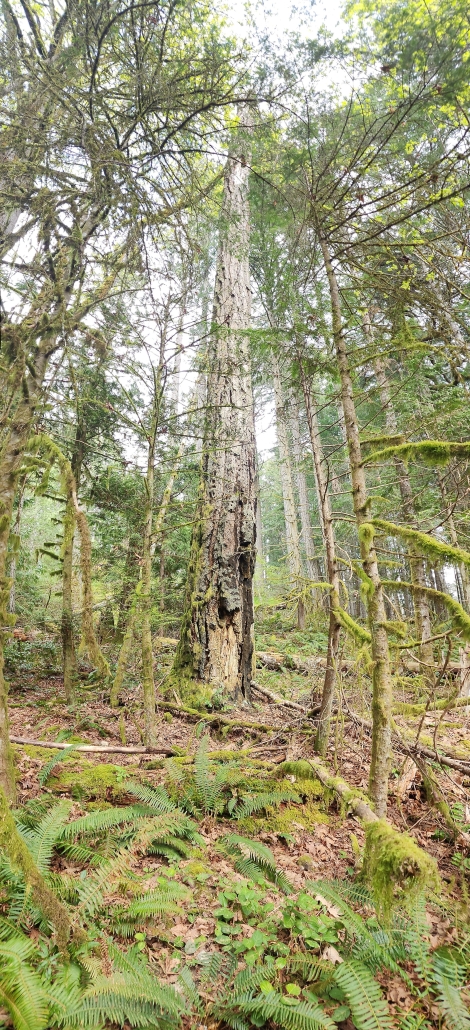
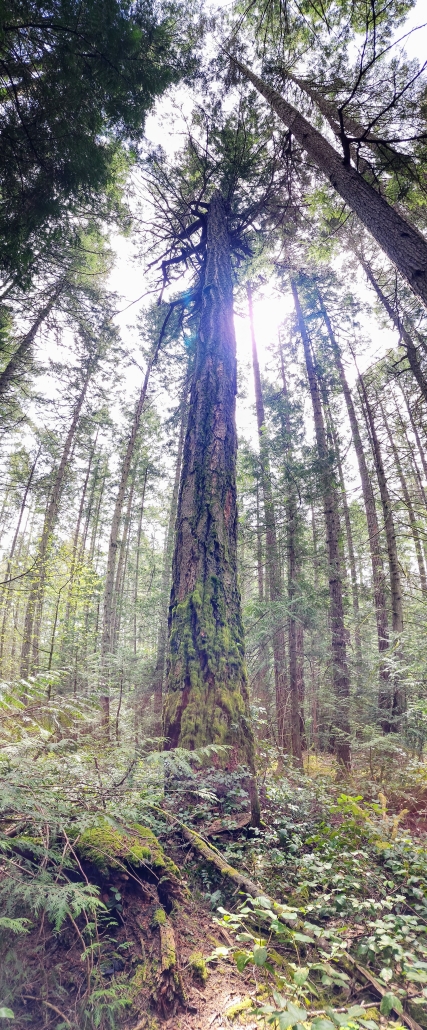
Protecting the property is also leveraging further protection through conservation covenants on neighboring properties—including a stretch of forest that will connect the property to the Mount Tuam Ecological Reserve. “It creates a corridor of protected land and preserves the interconnectedness of ecosystems,” says Day.
BC Parks Foundation extends its sincere gratitude to every individual who contributed to this crowdfunding campaign. “British Columbians love BC and want to keep it beautiful,” says Day. “What better way to give back and create a lasting legacy than coming together to protect places like this. It’s pure goodness.”
About BC Parks Foundation
BC Parks Foundation is an independent public foundation and the official charitable partner to BC Parks. Our vision is a connected system of parks and Indigenous protected areas that is cared for, resilient, and full of life, generating jobs, wealth and other benefits for people and other species.
The Land Conservancy of B.C. (TLC) is pleased to announce a spring 2024 session of the Deertrails Naturalist Program from May 14 to 19, 2024.
This four full-day workshop invites deep immersion in the practice of place-based living. Set in the beautiful Upper Clearwater Valley near Wells Gray Provincial Park, it’s designed for students, teachers, artists, naturalists – anybody seeking to build resilience into their lives in times of climate change by connecting with the living world.
Connection to place and commitment to stewardship arise from the stories we tell, not least about place itself. Whether we’re peering in from the edge of wilderness or putzing about in our own back yards, place-based narratives draw sustenance from the contemplation of living form and biologic process.
Throughout this workshop, leaders will introduce us to the rudiments of bird study, plant lore, fungus and lichen identification, forest ecology, and volcanology, as well as to the art of creating vehicles to meaning in the form of field journals, memory maps, and directed readings. More generally, we’ll be invited to consider how direct experience of the natural world can reimagine our place within it.
By day, Deertrails includes a series of naturalist-led hikes in a valley renowned for its volcanic history and vibrant ecologies. We’ll learn to follow forest trails in the paths of the elders, attend to waterfalls and precipitous canyons, listen for the early-morning songs of migrating songbirds, and generally immerse ourselves in an ecosystem awakening to spring.
Evenings, we’ll share a meal, converse indoors, huddle around the campfire, enjoy poetry and readings – allowing our conversations to run far and delve deep. We’ll also attend to the nighttime conversations of frogs, owls and wolves, and maybe take in some star-gazing.
2024 Instructors
Deertrails is hosted by The Land Conservancy of B.C. in collaboration with Edgewood Wild. Instructors this year are Briony Penn (author and artist), Lyn Baldwin (ecologist and artist), Juliet Pendray (naturalist specializing in fungi and lichen), Trevor Goward (lichenologist and place-based naturalist), with cameo appearances from and Cathie Hickson (volcanologist), Nancy Flood (ornithologist and ecologist) and Chris Coppin (amateur astronomer).
Application Deadline & More Information
The Deertrails Naturalist Program application window closes Thursday, March 28th at 5PM PDT. Applicants will be notified of the success of their applications in early April.
Program fees are $750 per person and include meals and basic accommodations. Bursaries covering up to 50% of program fees are available to participants in need of financial aid thanks in part to endowment funds hosted with the Victoria Foundation.
Accommodations included in the program fee consist of field station cabins at Thompson Rivers University’s Wells Gray Wilderness Centre. Tent and vehicle camping is available at no additional cost. For other accommodations in the Upper Clearwater Valley, please see www.wellsgraypark.info and www.wellsgray.ca.
To learn more and register for the Deertrails Naturalist program, please visit www.conservancy.bc.ca/deertrails or contact TLC at (250) 479-8053 or admin@conservancy.bc.ca.
About The Land Conservancy of BC:
The Land Conservancy of BC (TLC) is a non-profit, charitable Land Trust working throughout British Columbia. TLC’s primary mandate is to benefit the community by protecting habitat for natural communities of plants and animals including 141 acres of protected wetlands, forests, and wildlife corridors in the Upper Clearwater Valley. Founded in 1997, TLC is membership-based and governed by an elected, volunteer Board of Directors. TLC relies on a strong membership and volunteer base to help maintain its operations.
About Edgewood Wild:
Edgewood Wild is an outreach of Edgewood Blue, located in Upper Clearwater, BC. It is dedicated to the proposition that any path to a livable future in time of climate change must now include some form of reconciliation with Living World that sustains us all. The purpose of Edgewood Wild is to offer a venue for explorations of what reconciliation of this kind could look like. A variety of programmes are offered at no charge, though donations are welcome. You can find out more by linking here: https://edgewoodwild.org/
American Friends of Canadian Conservation (AFCC) is excited to announce the protection of Bowen Island, located in the Township of Tarbutt, Ontario. We had a great experience working with The Kensington Conservancy (TKC) on this ecologically significant land donation, and look forward to the opportunity to partner on future projects!
Please read the full story on TKC’s website here.
The border between Canada and the United States may be the world’s longest international border and the friendliest, with long-standing positive relationships between the residents of both countries. Quebec’s Eastern Townships is one region where that close connection is very apparent. Two Canadian organizations have been successful in their efforts to conserve the natural, scenic […]
Birds herald the spring with their songs, protect our crops from pests, and astound us with their beauty and versatility. The Vancouver Avian Research Centre is working to guarantee the future of these remarkable creatures.
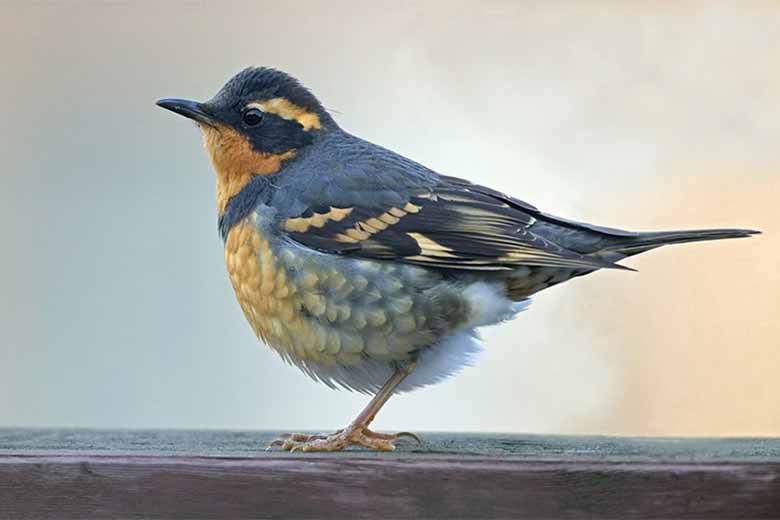 Photo courtesy of VARC
Photo courtesy of VARC The haunting minor-key song of the Varied Thrush announces the arrival of spring in Oregon, Washington and British Columbia’s coastal forests.
The annual north/south migrations of many bird species connect Canada and the US. Canadians, referred to as “snowbirds,” arrive each autumn in their southern US habitats and return home in the spring. In non-pandemic years, Americans travel north to their summer environs in Canada and head back to the US ahead of winter. Real bird migrations follow the same rhythm but for them migration is a matter of survival. Covid-related border closures don’t stop the seasonal avian journey, but many hazards make their migrations dangerous. Since 1970, North America has lost 2.9 billion birds!
The Vancouver Avian Research Centre (VARC), one of American Friends’ newest partners, works to safeguard birds and their habitats to ensure their long-term survival. VARC studies the health and populations of bird species that migrate through western British Columbia, providing valuable insights to guide effective conservation.
VARC, which is operated almost entirely by volunteers, strives to communicate that migratory birds need winter and summer homes, and secure sites to rest and refuel on their grueling annual trips. One of those sites is Colony Farm Regional Park, a 260-hectare (650 acre) park at the confluence of the Fraser and Coquitlam rivers, in suburban Vancouver where the old fields, hedgerows and wetlands provide habitat for over 200 bird species.
 Photo courtesy of VARC
Photo courtesy of VARC Yellow-breasted Chat is the largest member of the warbler family. It winters in Central America.
VARC’s field station at Colony Farm is where they monitor and band migratory birds. This work also increases public awareness of environmental issues through the inspiring experience of interacting with wild birds. Since 2009 VARC has banded more than 50,000 birds of 99 species, many of which stopped at Colony Farm during migration. See if you can identify the species in this video! Data gathered by VARC is submitted to the North American Bird Banding Program.
 Photo courtesy of VARC
Photo courtesy of VARC Short-eared Owls hunt in open fields, like those at Colony Farm, during the day.
Derek Matthews, a North American Banding Council (NABC) certified trainer and his wife Carol, co-founded VARC. They conduct workshops for adults including an introduction to Bird Monitoring and Banding and a Bird Identification Workshop. Participants are thrilled to see birds up close, and to learn about their life cycle and habits. VARC also offers programs for students, at schools and summer camps.
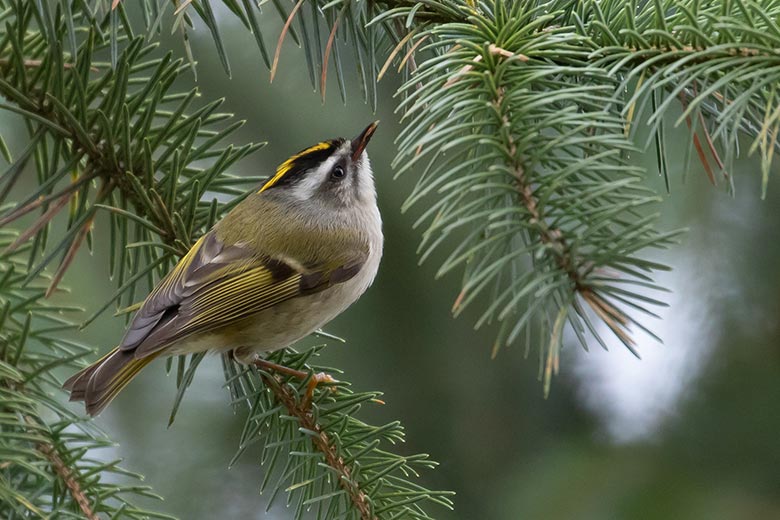 Photo courtesy of VARC
Photo courtesy of VARC Banding records reveal that Golden-crowned Kinglets that nest in Canada migrate into the US for the winter, but many US populations stay put.
Recently VARC launched the “Saving Our Songbirds” (SOS) initiative to supply 7 simple actions we can all take to protect the world’s bird populations. Currently VARC is focused on preventing “window strikes” which kill up to one billion birds each year in North America. SOS educates the public on this issue and encourages homeowners to act right away to create a safer urban environment for migratory birds.
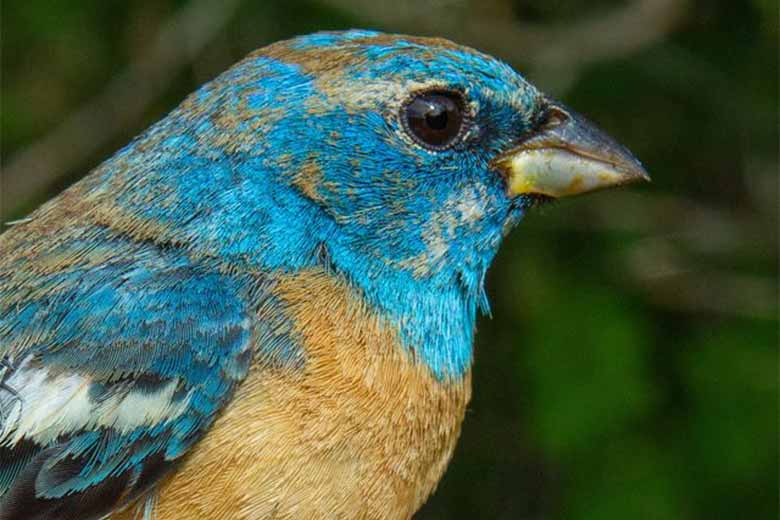 Photo courtesy of VARC
Photo courtesy of VARC Lazuli Buntings are flashy spring/summer residents of the western US and southern BC. Western Mexico is their home during fall/winter.
Learn more about Vancouver Avian Research Centre by watching the video created for Giving Tuesday or the one about banding hummingbirds. American Friends of Canadian Conservation is pleased to support VARC’s research, conservation and education initiatives. Contribute today to help migratory birds continue their remarkable seasonal journeys for generations to come. You can make a secure (US) tax deductible donation online, or get a Canadian tax receipt by contributing on VARC’s website.
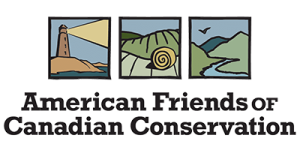
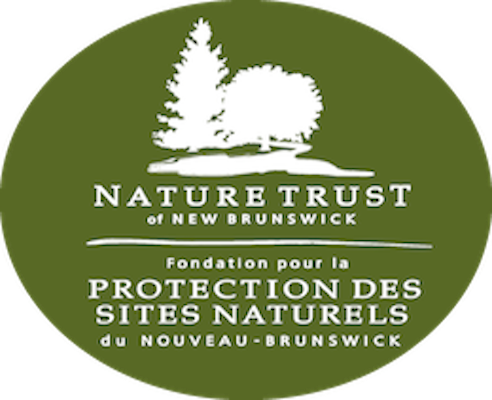


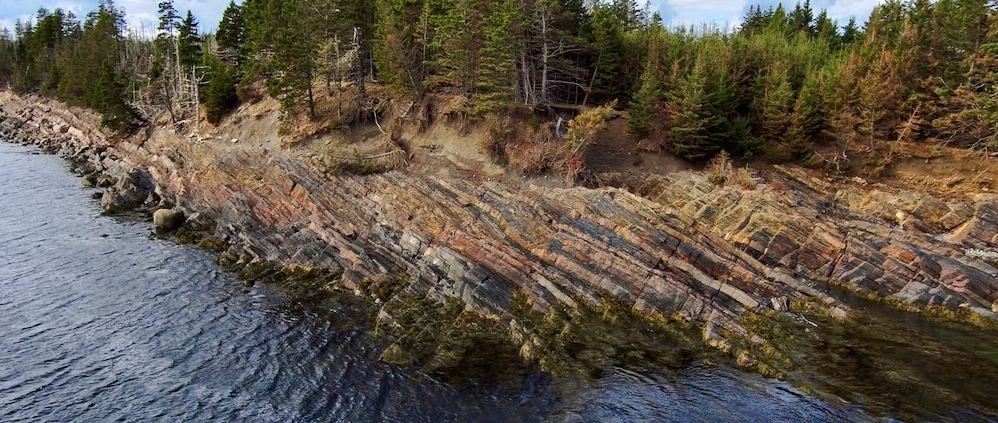
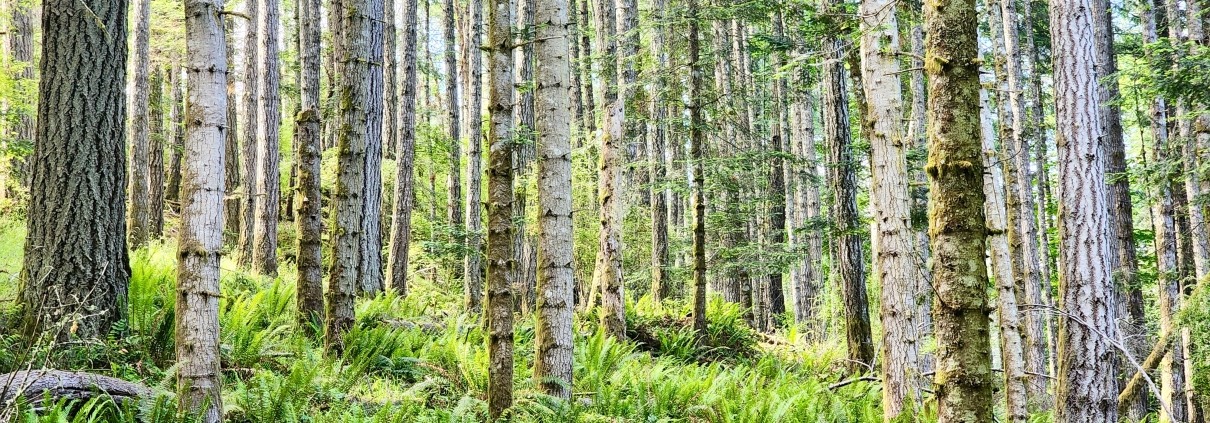
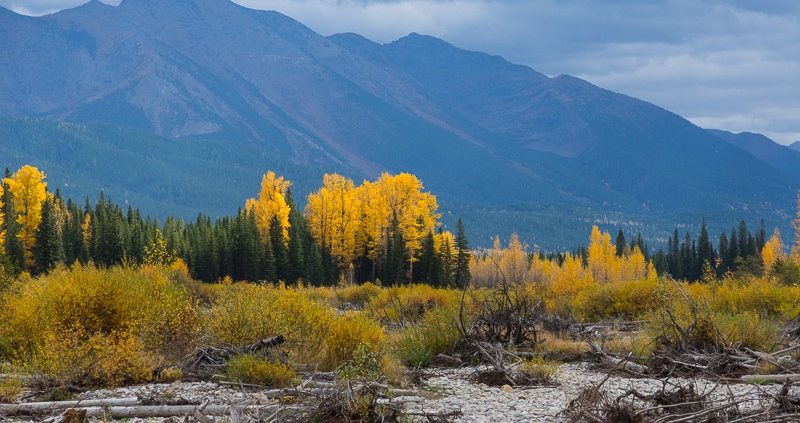
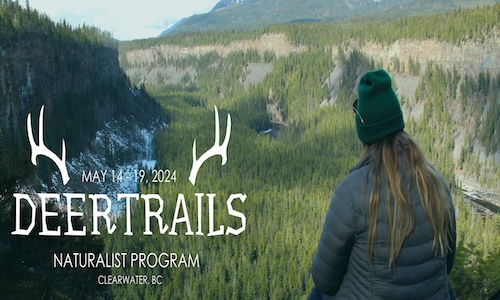
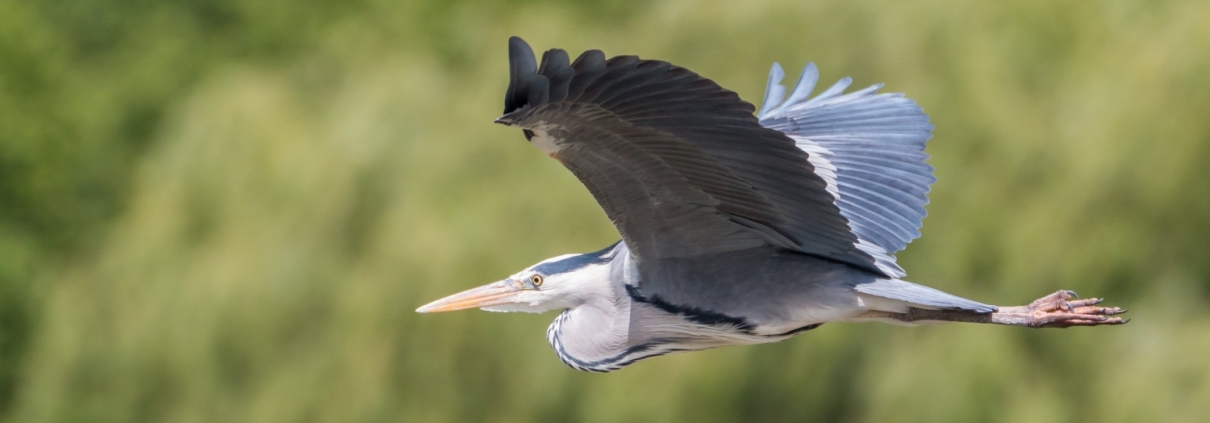
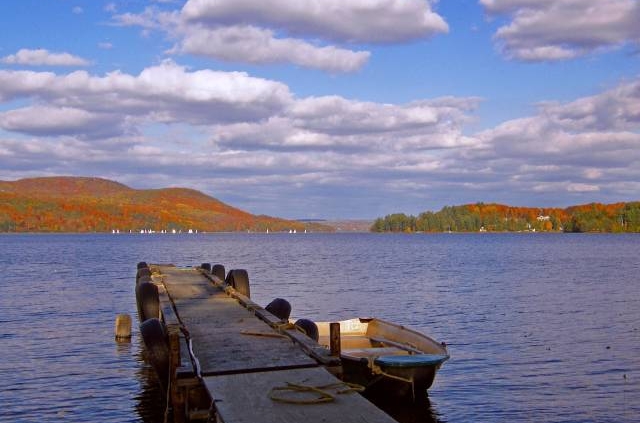
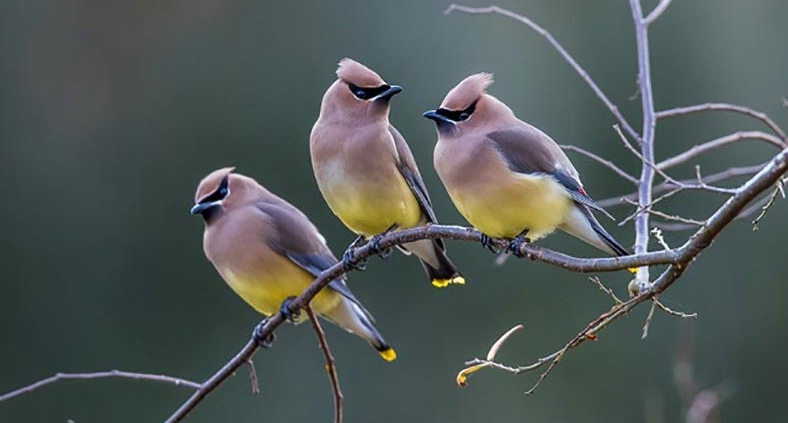 Vancouver Avian Research Centre
Vancouver Avian Research Centre